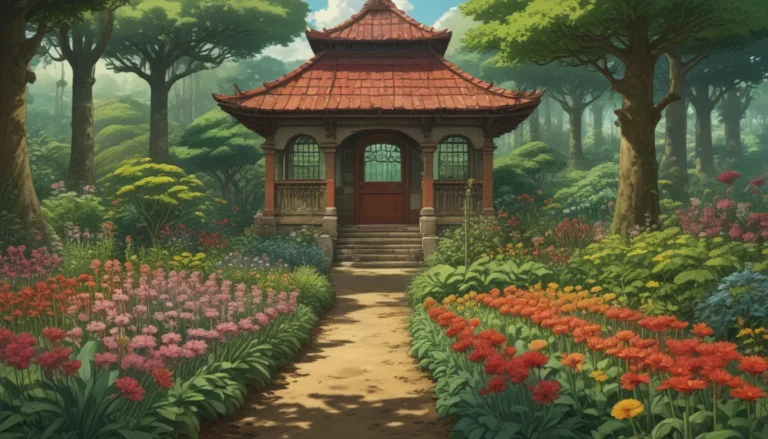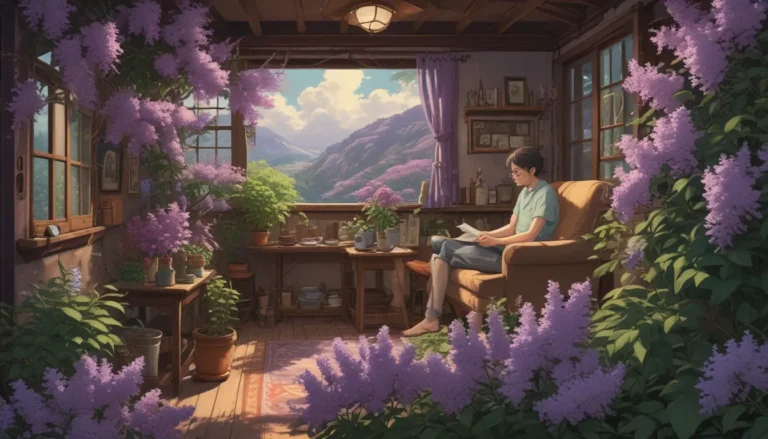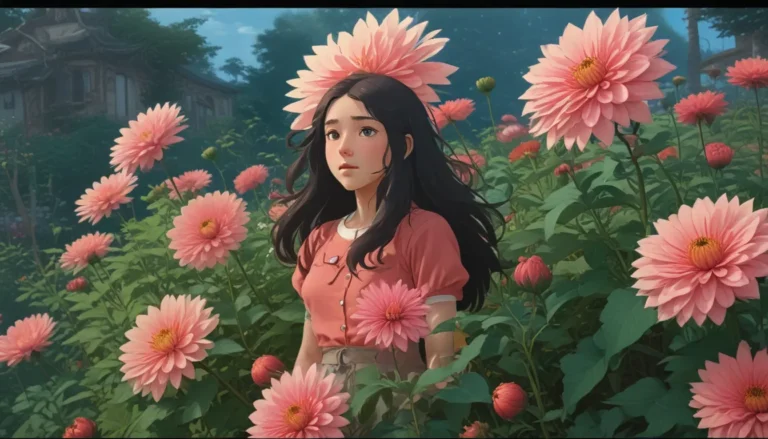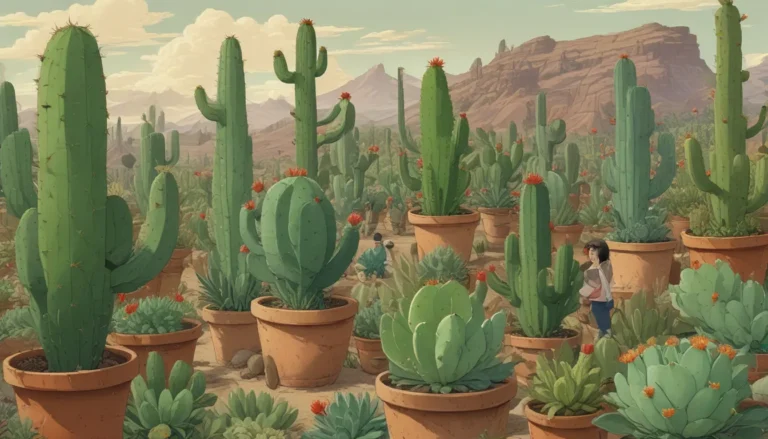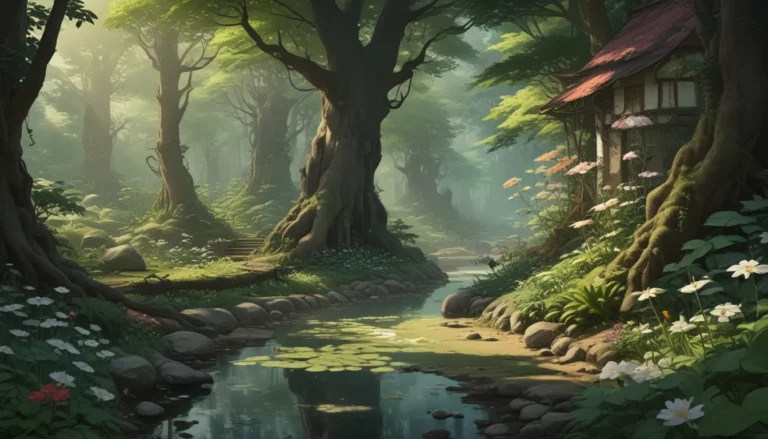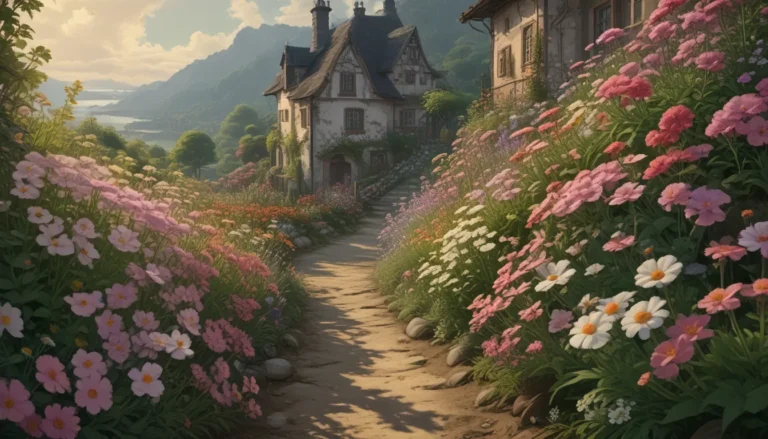The Ultimate Guide to Xerophytes for Your Garden
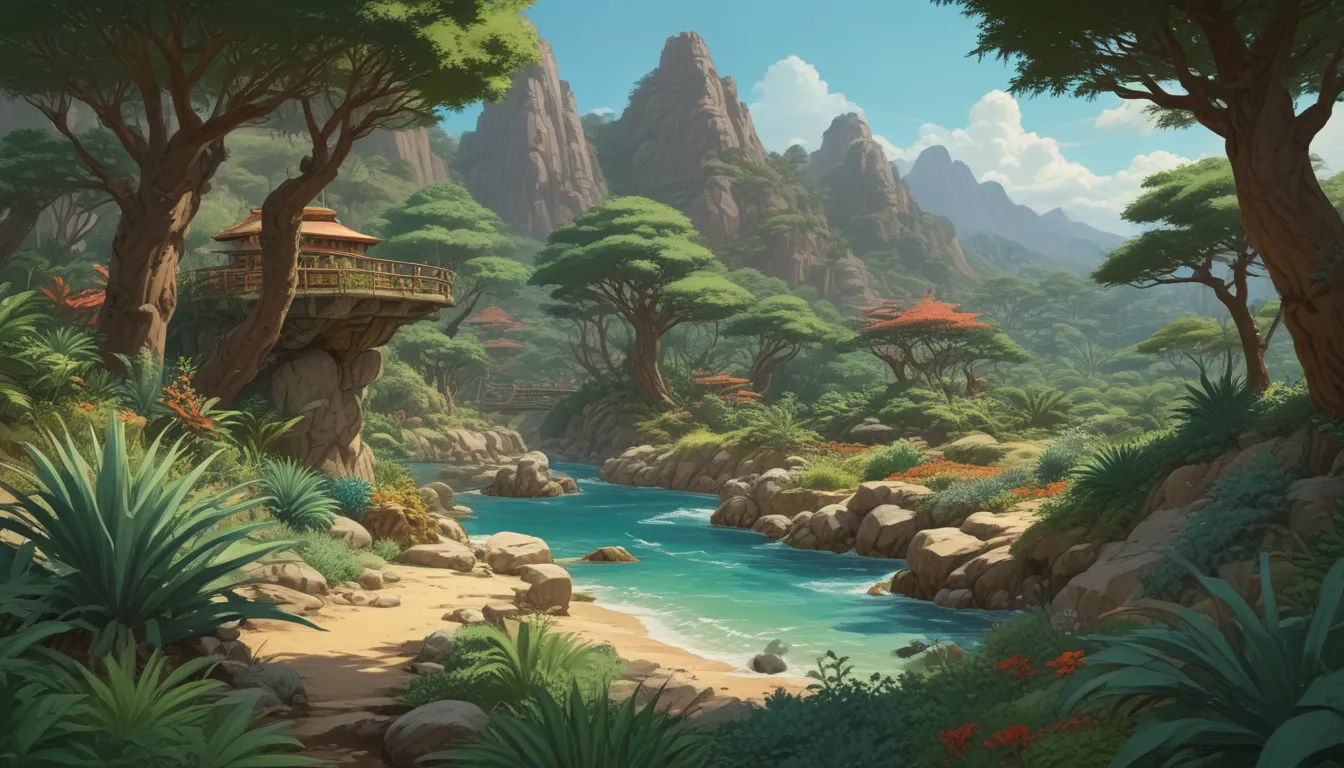
Are you looking to incorporate water-wise plants into your garden that are not only practical but beautiful as well? Well, look no further! Xerophytes, or drought-adapted plants, are the perfect addition to any landscape. You may immediately think of cacti, but xerophytes offer so much more – from colorful flowers to useful herbs and striking trees. In this article, we’ll explore 27 of the best xerophytes to grow at home. So let’s dive in and discover these amazing plants that conserve water and add aesthetic value to your garden.
The Benefits of Xerophytes
Before we delve into the list of plants, let’s understand the advantages of incorporating xerophytes into your garden. Water conservation is crucial to protect our precious natural resources, and xerophytes play a significant role in this regard. These plants require minimal irrigation, making them perfect for regions facing water scarcity or for gardeners looking to reduce water usage. Additionally, xerophytes can thrive in a variety of climates, ensuring that you can find suitable options for your landscape irrespective of your location.
27 of the Best Xerophytes to Grow at Home
Now, here’s a sneak peek of some of the top xerophytes you can consider planting in your garden:
- American Agave
- Blackfoot Daisy
- Blue Chalksticks
- Bougainvillea
- Calendula
- California Poppy
- Cosmos
- Creeping Sedum
- Euphorbia Tree
- Ice Plant
- Kalanchoe
- King Sago
- Moss Rose
- Mugo Pine
- Muhly Grass
- Olive
- Pineapple
- Pomegranate
- Prickly Pear Cactus
- Redbud
- Red Pencil Tree
- Red Yucca
- Silver Mound
- Snake Plant
- Texas Mountain Laurel
- Texas Sage
- Velvet Mesquite
Each of these plants offers unique characteristics and benefits, making them ideal choices for a water-wise garden.
American Agave: The Focal Point of Your Landscape
Let’s start with the American Agave, an exceptional choice for creating a striking focal point in your garden. Known for its ability to store water for extended periods, the American Agave is perfect for xerophytic gardens. With its impressive height and flowering stalk that resembles an asparagus, this plant adds a touch of grandeur to any landscape. Plant it in well-drained, sandy soil and watch it thrive in hot temperatures.
Blackfoot Daisy: The Hardy Beauty
For those seeking a cold-hardy xerophyte, the Blackfoot Daisy is a wonderful option. With its compact growth and daisy-like white blooms, this perennial thrives in sandy, dry soil with full sun exposure. Easy to care for and stunning to behold, the Blackfoot Daisy is a lovely addition to any water-wise garden.
Blue Chalksticks: A Blue Wonder
If you’re looking for a spreading ground cover with a striking blue hue, the Blue Chalksticks is the perfect choice. This succulent forms chalky blue leaves that add an attractive texture to your garden. Ideal for covering open ground and pairing with other colorful plants, the Blue Chalksticks is a versatile and drought-resistant option.
Bougainvillea: Versatile and Vibrant
The Bougainvillea is a versatile plant that offers a burst of color in various forms. Whether trained as a tree or left to cascade over walls, its vibrant clusters of bracts in magenta, white, orange, and purple are a sight to behold. With its ability to attract pollinators and thrive in Zones 9 to 11, the Bougainvillea is a must-have for water-wise gardens.
Calendula: The Pop of Color
For a pop of color in your garden, look no further than Calendula. Often mistaken for marigolds, Calendula produces bright yellow and orange blooms that can be planted in various conditions. From full sun to partial shade and dry to loamy soil, Calendula adapts well and adds cheerful hues to your landscape.
California Poppy: The Golden Beauty
Another vibrant addition to your garden is the California Poppy, also known as the Golden Poppy. With its adaptability to sunny, well-drained soil, this drought-resistant perennial blooms in shades of orange and yellow. Whether growing as a short-lived perennial or an annual, the California Poppy brightens up any water-wise garden.
Cosmos: The Colorful Addition
Do you love cosmos? These annuals, known for their candy colors, are low-maintenance and prolific reseeders. While most species are annuals, some variations can thrive year to year as perennials. With their stunning blooms and ability to withstand various growing conditions, cosmos are excellent choices for full sun beds and mass plantings in Zones 2 to 11.
Creeping Sedum: The Ground Cover Marvel
When you need a ground cover that offers both color and texture, turn to Creeping Sedum. With its fleshy leaves and spreading nature, this succulent thrives in harsh sun and lean soil. Ideal for rock gardens or filling spaces between larger specimens, Creeping Sedum adds a lovely pop of color to your landscape.
Euphorbia Tree: The Focal Point
Small understory trees like the Euphorbia Tree are challenging to find but make stunning focal points in water-wise gardens. With its toxicity and fast growth, this tree is best kept in open spaces away from people and pets. From its wide canopy to its colorful bracts, the Euphorbia Tree adds interest, color, and shade to your garden.
Ice Plant: The Color Explosion
In cooler regions, the Delosperma cooperi, or Cooper’s Hardy Ice Plant, offers a color explosion with its daisy-like blooms in various shades. As a low-growing succulent that can withstand drought, the Ice Plant is a practical and colorful addition to your garden. Whether used as a ground cover or for its forage properties, this plant is a versatile choice for Zones 4 to 9.
Kalanchoe: The Succulent Marvel
Known for its thick leaves and vibrant blooms, Kalanchoes add a touch of color and beauty to water-wise gardens. Despite being succulents, Kalanchoes produce lovely flowers and thrive in various conditions. Whether grown indoors or out, these plants add interest and charm to any landscape in Zones 9 to 11.
King Sago: The Slow-Growing Beauty
Often mistaken for a palm, the King Sago is actually a cycad that adds structural interest to your garden. With its slow growth and reduced water consumption, this tree can thrive in arid regions. Ideal for corners and beds, the King Sago offers shade, beauty, and unique foliage to your landscape in Zones 8 to 11.
Moss Rose: The Delicate Bloom
For a delicate touch of color, consider planting Moss Rose in your garden. With its ferny semi-succulent leaves and brightly colored blooms, this plant adds charm and texture to your landscape. While not as water-wise as other xerophytes, Moss Rose still offers beauty and versatility, making it a lovely addition to any garden in Zones 4 to 10.
Mugo Pine: The Compact Beauty
If you prefer a smaller pine tree, the Mugo Pine is an excellent choice for its compact size and hardiness. With its ability to thrive in harsh conditions and range of cultivars available, the Mugo Pine offers structural beauty and texture to your garden. Whether grown as a shrub or freeform tree, this plant adds depth and interest to your landscape in Zones 2 to 8.
Muhly Grass: The Dreamy Clouds of Color
For a touch of whimsy and color, plant Muhly Grass in your garden. With its fluffy panicles in various hues, this ornamental grass adds texture and beauty to any space. Whether grown in clay, sand, or lean soil, Muhly Grass thrives in full sun and harsh conditions. An excellent choice for borders, rock gardens, or pathways, this grass is a versatile and striking addition to your landscape in Zones 6 to 11.
Olive: The Versatile Beauty
The Olive tree is a grand-scale specimen that offers shade, structure, and potential food sources in your garden. With fruiting and ornamental varieties available, Olives add beauty and functionality to any landscape. Whether grown for fruit or aesthetic purposes, these trees thrive in full sun and sandy loam. Ideal for Zones 8 to 11, Olive trees provide beauty and utility to your garden.
Pineapple: The Tropical Delight
Did you know that Pineapple plants are succulents in the bromeliad family? These plants offer both foliage and delightful fruits, making them a unique and practical choice for your garden. Whether grown for aesthetics or edibility, Pineapple plants add tropical charm to your landscape. With full sun and sandy loam, these plants thrive in various conditions and offer colorful blooms and fruits in Zones 2 to 11.
Pomegranate: The Colorful Addition
Adding a fruiting tree to your garden brings beauty and productivity to your landscape. The Pomegranate tree, known for its attractive foliage and fruits, adds color and interest to any garden. Whether grown for fruit or ornamental purposes, Pomegranates thrive in sunny, well-drained soil. Ideal for Zones 7 to 11, these trees offer beauty, shade, and potential food sources to your garden.
Prickly Pear Cactus: The Dual-Purpose Plant
For a unique and multifunctional addition to your garden, consider planting the Prickly Pear Cactus. Known for its edible fruits and pads, this cactus offers water-thrifty beauty and productivity in your landscape. Whether grown for food or aesthetics, Prickly Pear Cacti thrive in sunny, dry conditions and add visual interest to any garden. Ideal for Zones 7 to 11, these plants are a practical and striking choice for water-wise gardens.
Redbud: The Delicate Beauty
With its delicate, purplish-red blooms and heart-shaped leaves, the Redbud tree adds a touch of elegance to any garden. Ideal for Zones 6 to 9, Redbuds are native North American plants that attract pollinators and offer color and shade to your landscape. Whether grown as a focal point or in mass plantings, these trees add vibrancy and beauty to any garden.
Red Pencil Tree: The Striking Specimen
For a distinctive and eye-catching addition to your garden, the Red Pencil Tree is an exceptional choice. With its fiery red, orange, and yellow hues, this tree adds color and interest to your landscape. Ideal for sunny, well-drained conditions in Zones 9 to 11, the Red Pencil Tree offers architectural beauty and visual impact to your garden.
Red Yucca: The Elegant Bloomer
Featuring weeping clusters of red blossoms, the Red Yucca adds elegance and color to any garden. Ideal for full sun and sandy soil, this plant thrives in Zones 6 to 11 and offers drought-resistant beauty and structure to your landscape. Whether grown for aesthetics or pollinator attraction, the Red Yucca is a versatile and striking addition to water-wise gardens.
Silver Mound: The Textured Ground Cover
Are you looking for a textured ground cover with a silvery hue? Silver Mound is a wonderful choice for adding depth and interest to your garden. Ideal for edges, borders, or large areas, this plant thrives in full sun and sandy soil. Whether grown for aesthetics or textural contrast, Silver Mound adds beauty and versatility to any garden in Zones 4 to 8.
Snake Plant: The Architectural Wonder
With its striking leaves and structural beauty, the Snake Plant is a unique addition to any garden. Whether grown for its architectural appeal or low-maintenance nature, this plant offers texture and interest to your landscape. Ideal for Zones 9 to 11, the Snake Plant thrives in various conditions and adds character and beauty to your garden.
Texas Mountain Laurel: The Fragrant Beauty
For a fragrant addition to your garden, consider planting the Texas Mountain Laurel. With its showy blooms and evergreen foliage, this tree adds scent and color to your landscape. Ideal for rocky, sandy soil and sunny conditions, Texas Mountain Laurel thrives in Zones 7 to 11 and offers shade and beauty to your garden.
Texas Sage: The Colorful Delight
If you’re looking for a vibrant and colorful shrub for your garden, Texas Sage is an ideal choice. With its soft, silver-gray leaves and pale pink to indigo blooms, this plant adds beauty and structure to any landscape. Ideal for full sun conditions in Zones 9 to 11, Texas Sage offers color and interest to water-wise gardens.
Velvet Mesquite: The Understated Beauty
Velvet Mesquite is a wonderful choice for adding shade, beauty, and structure to your landscape. With its multiple trunks and weeping form, this tree offers depth and elegance to any garden. Ideal for Zones 6 to 9, Velvet Mesquite is a versatile and striking addition to water-wise gardens.
Water-Wise Gardening Made Beautiful
Incorporating xerophytes into your garden offers practical benefits and visual appeal. From colorful flowers to structured trees, these plants not only conserve water but also enhance the aesthetic value of your landscape. By selecting the right xerophytes for your garden, you can create a beautiful and water-wise outdoor space that thrives in various conditions. So, explore the diverse world of xerophytes, and transform your garden into a vibrant and eco-friendly oasis.
Share Your Garden Plans
Are you planning to add any of these xerophytes to your garden? We’d love to hear about your gardening adventures! Share your thoughts and experiences in the comments below. And if you have any questions or need guidance, feel free to reach out. Happy gardening!
Remember, landscaping with xerophytes not only conserves water but also creates a striking and sustainable outdoor space. So, get creative, experiment with different plants, and watch your water-wise garden flourish into a beautiful and thriving oasis!
In conclusion, xerophytes are an excellent choice for water-conscious gardeners looking to create vibrant and sustainable outdoor spaces. By selecting the right plants, you can achieve a beautiful and eco-friendly landscape that thrives in various conditions. So, explore the world of xerophytes, experiment with different species, and transform your garden into a lush and water-wise oasis. Happy gardening!
